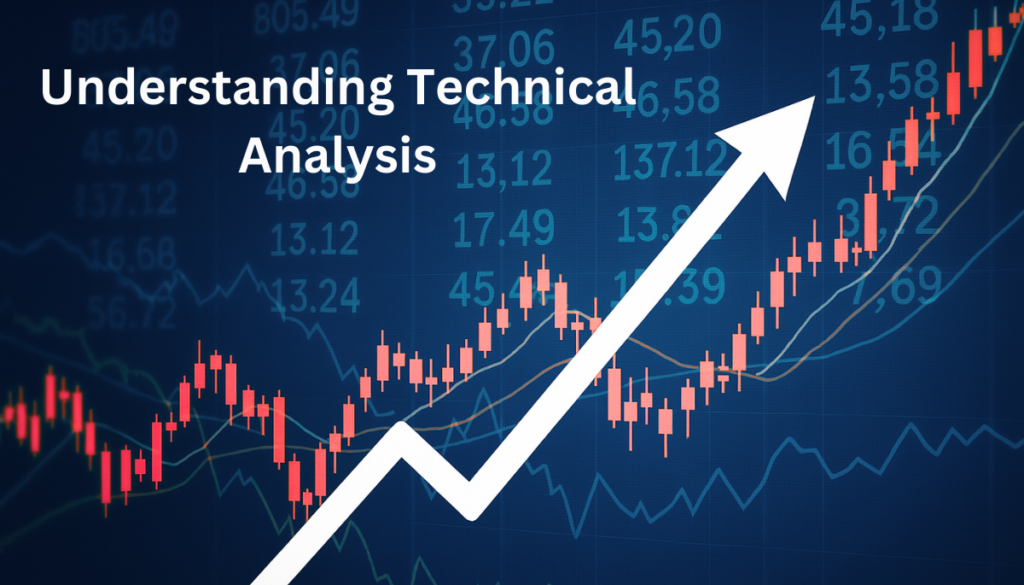Understanding Technical Analysis in the Indian Stock Market
Understanding Technical Analysis If you’ve ever watched stock prices dance up and down on a chart, you’ve probably wondered—can we predict where they’ll go next? That’s where Technical Analysis (TA) comes in. Unlike fundamental analysis, which digs into company financials, TA is all about reading price charts like a roadmap. And in a fast-moving market like India’s, it’s a game-changer for traders.
What Exactly is Technical Analysis?

At its core, TA is based on three big ideas:
- The market remembers – Prices move in trends (up, down, or sideways) that often repeat.
- Everything’s in the price – News, rumors, and earnings? Already baked into the stock’s current value.
- People don’t change – Fear and greed drive the same patterns over and over.
Think of it like weather forecasting—you can’t guarantee rain, but clouds sure hint at it.
The Trader’s Toolkit: Must-Know TA Techniques
1. Understanding Technical Analysis Candlesticks Tell Stories
Those red and green bars on charts? They’re called candlesticks, and they’re packed with clues. For example:
- A long green candle means buyers are in control.
- A Doji (looks like a cross) signals hesitation—like traders holding their breath.
- A Hammer at the bottom of a downtrend? Could mean a rebound’s coming.
2. Support & Resistance: The Market’s Floor and Ceiling
- Support is where a stock usually stops falling (like a trampoline).
- Resistance is where it struggles to rise further (like a glass ceiling).
Break these levels, and things get interesting—it’s like a dam breaking.
3. Moving Averages: The Trend Spotters
- The 50-day moving average is like a short-term mood ring.
- The 200-day average shows the long-term trend.
When the 50 crosses above the 200? That’s the “Golden Cross”—a bullish signal.
4. RSI: The Overbought/Oversold Alarm
The Relative Strength Index (RSI) ranges from 0 to 100. Above 70? The stock might be overbought (time to cool off). Below 30? Could be oversold (maybe a bargain).
5. Understanding Technical Analysis Volume: The Fuel Behind Moves
A price jump with high volume is like a rocket with fuel—it’s likely to keep going. Low volume? Might fizzle out.
Why TA Works So Well in India
- Retail traders rule – With millions of individual traders, patterns emerge from crowd psychology.
- Liquidity galore – Stocks like Reliance or HDFC Bank trade heavily, making trends clearer.
- Quick reactions – Indian markets respond sharply to global cues, giving TA traders opportunities.
But Here’s the Catch…
TA isn’t magic. Sometimes:
- News shocks (like a sudden RBI rule change) can wreck the prettiest chart.
- Too many indicators can confuse you—keep it simple.
- Emotions mess things up—stick to your plan.
Wrapping Up
Technical Analysis is like learning a new language—the more you practice, the better you get. Start with simple strategies, paper trade first, and always use stop-losses. The Indian market’s volatility is a double-edged sword, but with TA, you’ve got a map to navigate it.
Pro tip: Pair TA with a glance at fundamentals for the best edge. Happy trading!
For a deeper dive into this subject, don’t miss this excellent resource we found:10 Best Shares To Buy Today For Long Term

